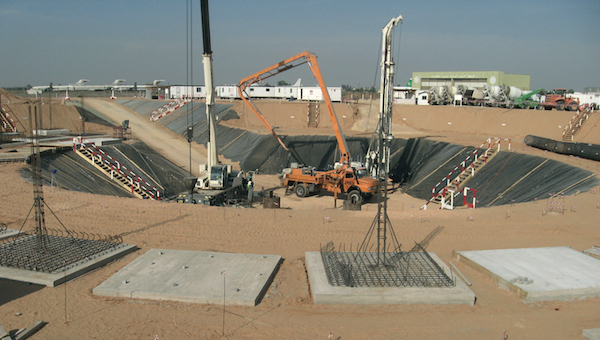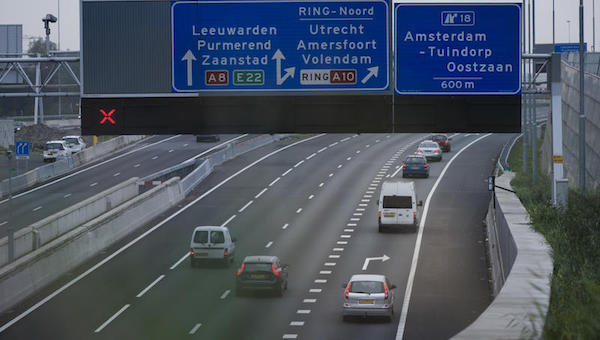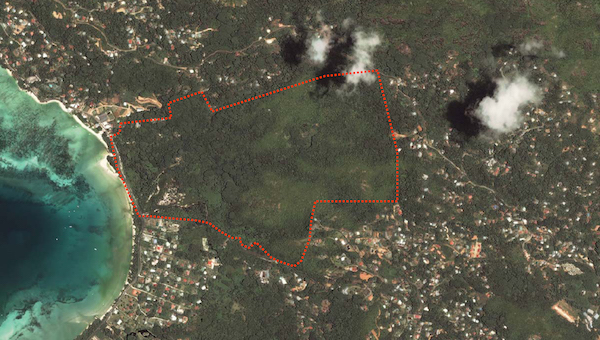The contract, worth €358 million, calls for building a pumping station with a capacity of 900,000 cubic metres/day and laying over 45 kilometres of pipeline with a diameter of 1,600 millimetres. The station will be used to channel Doha’s wastewater to a treatment plant currently under construction 25 kilometres to the north of the city.
Work will start on the 22nd of March 2009 and take 33 months to complete.
The contract draws on synergies between the VINCI Group’s various areas of expertise (pipe laying, water processing and civil engineering at VINCI Construction Grands Projets; and pumping and electromechanical engineering at Entrepose Contracting), as well as QDVC’s strong local presence. It is the biggest hydraulic engineering contract ever won by VINCI Construction Grands Projets.
The contract covers civil engineering and all the technical and architectural building trades (€42 million), as well as airport infrastructure (€13 million). The work is scheduled to take 18 months.
The principal earthworks (20,000 cubic metres), bored piles (24 piles with a diameter of 1.20 metres and depth of 30 metres) and concrete foundations of the control tower have already been completed; the shaft and foundations for the plant room are currently under construction. The new tower will enable the airport’s capacity to increase from 2 million to 20 million passengers a year.
VINCI Construction Grands Projets recently completed the Al Gardabiya Assdada pumping stations as part of the Great Man Made River Project in Libya. This vast project, which was launched at the beginning of the 1980s for a period of 25 years, aims to supply water to the coastal regions with a view to developing agriculture and meeting domestic and industrial needs.
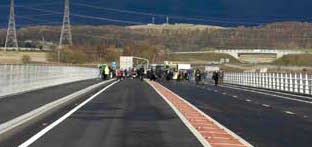
The Clackmannanshire Bridge was inaugurated on November 19, 2008 by Alex Salmond, First Minister of Scotland, in the presence of the 11th Count of Elgin, who had been present at the age of 7 for the launch of construction on the first Kincardine Bridge in 1931.
The 11th Count of Elgin is descended from Thomas Bruce, 7e Count of Elgin, a British diplomat who oversaw the shipping of sculptures from the Parthenon to the British Museum in the early part of 19th century. This €145-million project, which VINCI Construction Grands Projets (50 %) carried out in collaboration with Morgan Est, consisted in the design and construction of an incrementally launched bridge over the River Forth as well as 2-km access roads on both sides.
The First Minister called the Clackmannanshire Bridge a world-class infrastructure project. The new bridge will cut journey time considerably, improve connections in Central Scotland, and provide direct access to the districts of Clackmannanshire, Fife, and Falkirk. Approximately 20,000 cars will cross the new bridge every day. The 1,200-m span will connect trunk roads north and south of the River Forth, reducing traffic congestion in the city of Kincardine, located 40 kilometres northwest of Edinburgh.
From an environmental standpoint, the Clackmannanshire Bridge project included measures to limit the impacts of major construction on local wildlife and vegetation. From its northern to its southern edges, the project was framed by protected natural zones (salt marshes and mud banks) that are home to many animal species, particularly, migrating birds. In accordance with Britain’s biodiversity action plan, the project included the removal of dykes from the site of a former electric power-generation plant to make way for 8 hectares of salt marshes and mud banks. It also included the creation of an island for birds. Another noteworthy feature of the project was its use of recycled materials as discharge from electrical plants and mining activities was used on-site as fill.
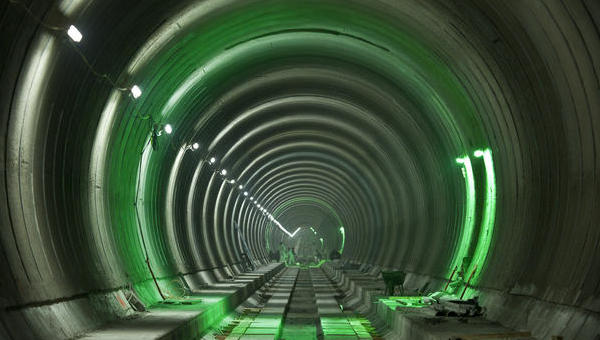
This four-and-a-half-year project calls for the design and construction of a dual railway infrastructure 16.2 kilometres long, connecting the north and south shores of the port of Antwerp in Belgium, for the transportation of merchandise by train. The new infrastructure will relieve traffic congestion around the port, which is undergoing substantial expansion in its merchandise-transportation activities.
The project includes an excavated railway zone (4.76 km), infrastructure in open and covered trenches (4.27 km), the re-opening of the existing (but never used) Beveren tunnel (1.2 km), and two tunnels, 5.97 kilometres in length each, bored through the sand-and-clay subsoil under the North Sea channel and the Escault river. The project also includes electromechanical installations in the bored tunnels, including smoke-control and fire-protection systems (ventilation).
The work will be conducted as part of a 42-year public-private partnership (PPP) contract signed by the Locorail consortium, which consists of VINCI Concessions (25 %), CFE (25 %), of which VINCI holds a 47 % share, and BAM PPP (50 %) of the Netherlands.
Construction work will begin at the end of 2008 and be completed in mid 2013.
This is the latest in a series of tunnel projects by VINCI Construction Grands Projets around the world, which includes the Coentunnel in Amsterdam, Hallandsås in Sweden, Brightwater in the United States, Duplex A86 in the western of Paris, and subways in Budapest, Cairo, Algiers, and Athens. These projects are a testimonial to the extensive expertise, know-how, and experience that VINCI Construction Grands Projets brings to major below-ground infrastructure projects and confirm its world leadership in this area.
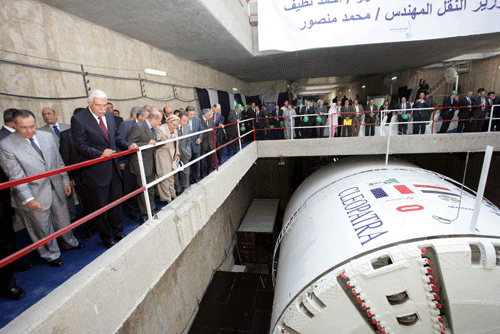
The event was attended by Egyptian Prime Minister Ahmed Nasif, Minister of Transportation Mohamed Mansour and representatives of the client, the National Authority for Tunnels (NAT). The ceremony took place at the launch pit (see photo). Lead contractor VINCI Construction Grands Projets (28.5 %) is currently fulfilling the civil engineering mandate for Phase 1 on Line 3 of the Cairo subway in conjunction with Arab Contractors, Bouygues and Orascom.
Line 3 of the Cairo subway will cross the capital from west to east. With its 33 kilometres of track and 29 stations, it will connect the airport, located 22 kilometres northwest of downtown near Heliopolis, to the Mohandessin neighbourhood at Guiza. The project is divided into four phases. The first phase, currently under way, consists of 4.5 kilometres of tunnel construction and 5 underground stations. This initial phase will connect Abassya and Attaba by 2010.
The next step is set for mid September with Cleopatra’s first cutting-wheel rotation – a month and a half ahead of schedule!
VINCI Construction Grands Projets has already participated in the construction of the first two subway lines in Cairo. Line 1, built in the early 1980s, consists of 34 stations (including 4 underground) and runs 44 kilometres from El Marg to Helwann. Line 2, built in the 1990s, consists of 20 stations (12 underground) and runs 22 kilometres from Mounib to Shubra. Respectively, Lines 1 and 2 carry 1.5 million and 1.2 million passengers a day.
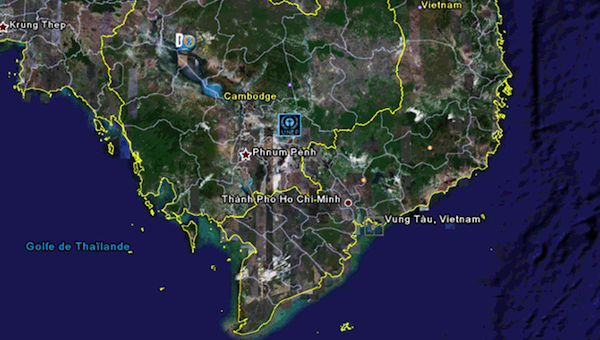
The contract, valued at €15 million, calls for the installation of a waste-water-treatment system (which is the part of the mandate assigned to VINCI Construction Grands Projets) and the building of seven pumping stations and one water-treatment plant.
This new contract helps to consolidate the presence of Hydraulique Internationale (the water-management division of VINCI Construction Grands Projets) in Vietnam, where two other projects are under way. The project designed to upgrade the Ha Dong water-management system is in the stage of acceptance; meanwhile, the environmental-protection project in Hoi An is set to be completed in early 2009.
RPE contracts allow eligible countries to benefit from low-rate loans to purchase goods and services from France. For Hydraulique Internationale, this type of contract is an interesting way of showcasing its water-management expertise on the world stage. It is also an opportunity to gain favourable market positioning and build a network of professional contacts in the host nations.
The project, in total worth over 500 million euros, calls for the financing, design and construction of a submerged, 8-lane road tunnel, as well as renovating the existing tunnel there and maintaining both tunnels for a period of 30 years. Remuneration of the concessionaire will be in the form of an annual payment, paid by the concession-awarding authority; the amount will depend on the actual availability of the infrastructure to users of these tunnels, which connect the centre of Amsterdam with the northern part of the Netherlands.
The works, lasting 5 years, will be carried out by a consortium made up of VINCI Construction Grands Projets and the VINCI Construction subsidiaries CFE and DEME, along with TBI, Dura Vermeer and Besix.
Located on the largest island in the Seychelles and home to the tallest peak in the archipelago, this luxury hotel complex, overlooking the Anse à la mouche bay, will extend over 840,000 m² of forest.
The hotel will include 106 rooms, three restaurants, a spa, a children’s village, and a water-sports centre. The project also includes design and construction of 40 villas in annex to the property, a commercial trade zone, and a panoramic restaurant. To ensure greater comfort, the construction of a new road along the shoreline will permit direct access by foot to the sea.
The contract, valued at €8.2 million, is an ECI (Early Contractor Involvement) agreement wherein the contractor completes the feasibility study and design phase before the client and contractor agree on a target cost for implementation.
VINCI Construction Grands Projets, in a joint venture with its longstanding partner in the United Kingdom, Morgan Est, built all seven railway and road tunnels needed to link the new structure to the four existing terminals.
Valued at €275 million, this ECI (Early Contractor Involvement) contract, which secures involvement from the client, civil-engineering firm, and designer at the design and engineering studies stage, will optimize time and operations management on this project for the BAA (British Airports Authority).
This enormous 15-year undertaking enables a 50 % increase in capacity at what was already the busiest airport in Europe.
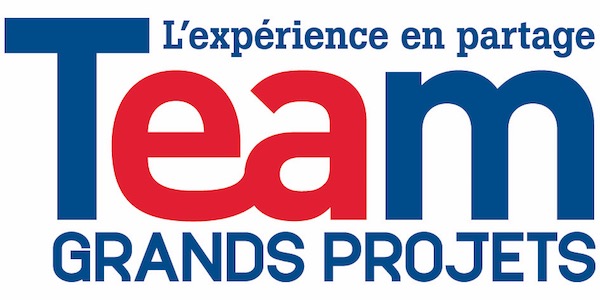
The training program, put forward by President Pierre Berger, was developed in partnership with Ecole Nationale des Ponts et Chaussées (ENPC) and an in-house working group. This training initiative is aligned with the planned management of employment and skills. It is also a response to the strong growth that VINCI Construction has experienced since 2000 and its involvement in increasingly complex projects. It will also help the company manage more effectively its participation in a growing number of business lines and diverse mandates such as waterworks, roadwork, and building construction.
The guiding principle of the training program is an alliance between internal and external skills. Most of the raw materials is provided by employees of the company with an emphasis on practical cases: “concession-construction-maintenance” mandates; industrial assignments with project piloting; multidisciplinary assignments with or without project piloting; and major building construction.
The training is designed for worksite managers, technical directors, construction managers, materials managers, administrative and finance directors, young project directors, and high-potential site engineers.
The aim of the training is to encourage an open mind and greater awareness of the challenges and risks intrinsic to major projects – and to accelerate their career development. Delivered over a four-month period, the training cycle (3 x 1 week) gives trainees an opportunity to stay operational and quickly put into practice their new knowledge and skills.



